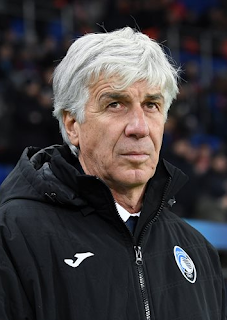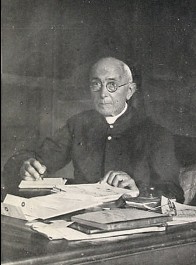 |
| Bonvicino - known as Il Moretto - was born in Brescia but also worked in Bergamo |
 |
| Il Moretto's Madonna and Child Enthroned with Saints at the Chiesa di Sant'Andrea |
 |
| Bonvicino - known as Il Moretto - was born in Brescia but also worked in Bergamo |
 |
| Il Moretto's Madonna and Child Enthroned with Saints at the Chiesa di Sant'Andrea |
 |
| Atalanta's Matteo Pessina scored Italy's crucial second goal in the 2-1 win over Austria |
 |
| Joakim Maehle scored for Denmark against Wales |
 |
| Matteo Pessina has become a star of Bergamo's Atalanta team |
 |
| The German wing back Robin Gosens has become one of Atalanta's top players |
 |
| Brazilian-born Rafael Tolói qualified to play for Italy earlier this year |
 |
| Matteo Pessina replaces the injured Stefano Sensi |
 |
| Ruslan Malinovskyi scored the Atalanta goal in a 2-1 defeat |
 |
| Atalanta's fortunes have been transformed under Gasperini |
 |
| Atalanta's top striker, the Colombian Luis Muriel |
 |
| Atalanta is named after a Greek goddess |
 |
| Atalanta play their home matches at the expanded Gewiss Stadium in the Città Bassa |
 |
| The bells in the Campanone still chime at 10pm each night |
 |
| The Meridiana Monumentale sundial is a particular curiosity |
 |
| Trattoria Tre Torri is housed inside a medieval tower |
Well, you can easily sample the medieval atmosphere for just a couple of
hours by having lunch or dinner at Trattoria Tre Torri in Piazza Mercato del
Fieno in the Città Alta. The square is just off Via Gombito to the right,
almost opposite the enormous Torre Gombito. It was once the site of the Città
Alta’s hay market and the piazza is still bordered by three medieval tower
houses, which have been cut down from their former heights but are still the
original structures.
One of the houses, which used to be owned by Bergamo’s rich and powerful
Suardi family, has a pretty little balcony under a double arched mullioned
window.
Another tower on the square, opposite the three adjoining towers, houses the Trattoria Tre Torri, which serves good quality
local food at reasonable prices. There are some tables for two but you can also
sit at large wooden tables with benches if you are a larger party.
The original stone has been left exposed on the inside walls. One night
when I went there for dinner with my family it was raining heavily outside and
we were amused to notice the rain running down the walls inside, but we still
felt very warm and cosy and enjoyed the meal.
 |
| The three adjoining towers on the square were once much taller |
There is all the atmosphere you would expect to experience when dining
in a genuine medieval tower and there are also tables outside under an awning
for dining during the summer.
Piazza Mercato del Fieno is where the Città Alta’s post office is
located and it also has some shops and bars. It is a good place to stand to
take a photograph of the Gombito tower, which looms high above Via Gombito. The
square is on higher ground and is sufficiently far away to enable you to
capture a shot that includes the top of the tower.
Trattoria Tre Torri is located at Piazzo Mercato del Fieno 7.
 |
| The original medieval brickwork is a feature of Trattoria Tre Torri's cosy interior |
 |
| Giacomo Quarenghi was born in a village not far from Lecco |
Quarenghi’s simple, yet imposing, Neoclassical buildings, which often featured an elegant central portico with pillars and pediment, were inspired by the work of the architect, Andrea Palladio.
As a young man, Quarenghi was allowed to study painting in Bergamo despite his parents’ hopes that he would follow a career in law or the church. He travelled widely through Italy, staying in Vicenza, Verona, Mantua and Venice in the north and venturing south to make drawings of the Greek temples at Paestum before arriving in Rome in 1763. His first focus was on painting, but he was later introduced to architecture by Paolo Posi.
His biggest inspiration came from reading Andrea Palladio's Quattro Libri d'archittetura, after which he moved away from painting to concentrate on the design of buildings.
He returned to Venice to study Palladio and came to meet a British peer who was passing through Venice on the Grand Tour. It was through him that Quarenghi was commissioned to work in England, where his projects included an altar for the private Roman Catholic chapel of Henry Arundell at New Wardour Castle.
His first major commission in Italy (1771–7) was for the internal reconstruction of the monastery of Santa Scholastica at Subiaco, just outside Rome, where he was also asked to design a decor for a Music Room in the Campidoglio. He drew up designs for the tomb of Pope Clement XIII, but these were later executed by Antonio Canova.
 |
| The Russian Academy of Science is based at one of Quarenghi's St Petersburg palaces |
Quarenghi's first important commission in Russia was the magnificent English Palace in Peterhof, just outside St Petersburg, which sadly was blown up by the Germans during World War II and was later demolished by the Soviet government.
In 1783 Quarenghi settled with his family in Tsarskoe Selo, the town which was the former seat of the Russian royal family, where he would supervise the construction of the Alexander Palace.
Soon afterwards, he was appointed Catherine II's court architect and went on to produce a large number of designs for the Empress and her successors and members of her court, as well as interior decorations and elaborate ornate gardens.
His extensive work in St Petersburg between 1782 and 1816 included the Hermitage Theatre, one of the first buildings in Russia in the Palladian style, the Bourse and the State Bank, St. George’s Hall in the Winter Palace (1786–95), several bridges on the Neva, and a number of academic structures including the Academy of Sciences, on the University Embankment.
 |
| Rota d'Imagna is a beautiful village in the Lombardy countryside 25km from Bergamo |
His work outside St Petersburg included a cathedral in Ukraine and among his buildings in Moscow were a theatre hall in the Ostankino Palace. He was also responsible for the reconstruction of some buildings around Red Square in Moscow in neo-Palladian style.
He obviously never forgot his northern Italian roots because he showed his appreciation for Catherine II’s patronage by giving her a case of Bergamo’s prestigious wine, Moscato di Scanzo.
The grapes for this rich, ruby red wine are grown in vineyards in a small, area of countryside just outside Bergamo, land that is about 31 hectares wide only. This is the only territory where the grapes can be grown for Moscato di Scanzo.
A wine that has earned the title Denominazione di Origine Controllata e Garantita (DOCG), the highest grade given to a wine in Italy, Moscato di Scanzo is made from grapes harvested solely from the fields around Scanzorosciate, a town about six kilometres (four miles) to the northeast of Bergamo in the foothills of the southern Alps.
But Quarenghi
was less popular with Catherine II’s son and successor, the Emperor Paul,
although he enjoyed a resurgence of popularity under Alexander I. When the
famous architect returned to Italy from time to time he always received an
enthusiastic welcome.The Biblioteca Angelo Mai in Bergamo has
a collection of Quarenghi's designs
Quarenghi retired in 1808 but remained in Russia, even though most of his 13 children by his two wives chose to return to Italy.
He was granted Russian nobility and the Order of St. Vladimir of the First Degree in 1814. He died in Saint Petersburg at the age of 72.
Rota d’Imagna, Quarenghi’s birthplace, is situated in the Imagna Valley, a popular tourist spot because of its largely unspoilt landscape and spectacular mountain views, with many visitors attracted to trekking, mountain walks and horse riding. In the village itself, the Church of Rota Fuori, dedicated to San Siro, which was built in 1496 and restructured in 1765, has art works of significance by Gaetano Peverada, Pier Francesco Mazzucchelli and Carlo Ceresa. Quarenghi’s home was Ca’ Piatone, a palace built in the 17th century.
Bergamo remembered him by naming a street Via Giacomo Quarenghi in the Citta Bassa. Also, in 2017 the city marked the 200th anniversary of his death with a programme of events to honour him.
In Piazza Vecchia in the Città Alta, the library, La Biblioteca Civica Angelo Mai, has a collection of 750 architectural designs by Giacomo Quarenghi. These are available to the public on a DVD with texts in Italian or in English.
Bergamo is well known for its art treasures and musical heritage but perhaps not widely recognised as a centre for science.
However, in the historic upper town,
the Città Alta, there is a prestigious natural history museum with thousands of
fascinating artefacts for visitors to see.
The Museo Civico Scienze Naturali Enrico
Caffi is in Piazza Cittadella
The Museo Civico Scienze Naturali
Enrico Caffi (The Civic Museum of Natural Sciences Enrico Caffi) is in Piazza
Cittadella, a square close to Colle Aperto and Porta Sant’Alessandro.
A reproduction of a huge mammoth
greets customers in the entrance hall. Inside the museum, exhibits are divided
into the categories of zoology, entomology, geology and palaeontology.
There are examples of all five
classes of vertebrates, along with a collection of anthropods.
The museum’s origins date back to the
end of the 19th century when exhibitions were held during public holidays of
the artefacts from the Royal Technical Institute Vittorio Emanuele II.
In 1918, the museum moved to Piazza
Vecchia in the Città Alta and in 1920, Dottore Enrico Caffi was appointed as
the first director of the museum and organised the cataloguing of all items in
the museum’s collection. Caffi was an expert on the Parco delle Orobie outside
Bergamo and devoted his time to studying the flora and fauna. He left a large
quantity of manuscripts with scientific articles about his findings and maps of
the territory.
Dottore Enrico Caffi was the
museum's first director
Under successive professors the
museum was expanded and studies were made of Lago Endine and the Brembo and
Serio rivers.
In 1969, the museum moved to its
present headquarters in Piazza Cittadella. Four years later, a fossil of the
oldest known flying creature was found in Seriana valley. The creature, who lived more than two million years ago, was described for the very
first time by Rocco Zambelli, who was responsible for the paleontology section
of the museum.
The museum now has laboratories for
educational purposes and a sensory path with Braille captions for blind
visitors.
In normal times the Natural Sciences Museum is open from Tuesday to Sunday, but it has temporarily closed due to Covid 19. Visit www.museoscienzebergamo.it for more information.